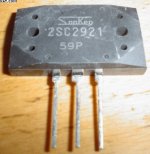ACD said:Anders
I have no problems when downloading the file 😕
I get "insufficient data for an image" in acrobat 7.0 msxp.
Hi Jan,
I download the one on your site and compare them to the one I sent you, seems your uploaded file was corrupted.
Let me know if the one you recieved from me was the same and I will send you the two rar files.
cheers
unmibh
I download the one on your site and compare them to the one I sent you, seems your uploaded file was corrupted.
Let me know if the one you recieved from me was the same and I will send you the two rar files.
cheers
unmibh
Sony TA-N55ES power amplifier
This design has virtually nothing to recommend it: lack of first-stage degeneration, poor output stage design etc

I agree with you,Mikeks
Tomorrow i will upload on the same site a more interesting Sony schematics (TA-N90ES)
Tomorrow i will upload on the same site a more interesting Sony schematics (TA-N90ES)
Downloaded the rar file...however it requires at least part2 to be complete. The site only shows part1. Please upload the rest of the file(s).Thanks
mikeks said:ACD,
Your file is corrupt...
You'll have to upload the file again.
I downloaded it no problems from ACD.
Thanks again Jan,
Shawn.
mikeks said:poor output stage design
The wimpy output stages of these Japanese power amplifiers continue to amaze me. The N55ES was a cheap model, about $650 overhere around 1990, only in bridged mode it was any good.
(the output stage of the TA-N90 Esprit series looks pretty wimpy too for a 2.5 k$ power amplifier)
The N55ES, as all the low end models, employed low Hfe 0-type output devices, are the low Hfe grades significantly cheaper in production ?
Attachments
Interestingly , the Sony TA-N90 use a Mosfet in the VAS, not very common ... besides, the use of a cascode help a little in the Miller capacity department...
Tube_Dude said:Interestingly , the Sony TA-N90 use a Mosfet in the VAS..
What VAS?

Don't you mean TIS?

mikeks said:
What VAS?
Don't you mean TIS?
The Q405 mosfet (left amp) perform the voltage gain of the amplifier (VAS).
In the usual case of a bipolar performing this function , we can talk of a output voltage from the LTP (and current mirror ) node, to be transformed in a current by the relatively low impedance of the bipolar VAS.
In the Sony case , we have a very high impedance node (collectors of LTP and current mirror ) driving a very high input impedance mosfet, so voltage is not converted in input current at the mosfet gate (only a small portion at very high frequencies , caused by the Mosfet input capacitance).
I think that this amp from Sony must have some stability problems issues...😉
Tube_Dude said:
In the usual case of a bipolar performing this function , we can talk of a output voltage from the LTP (and current mirror ) node, to be transformed in a current by the relatively low impedance of the bipolar VAS.
In the Sony case , we have a very high impedance node (collectors of LTP and current mirror ) driving a very high input impedance mosfet, so voltage is not converted in input current at the mosfet gate (only a small portion at very high frequencies , caused by the Mosfet input capacitance).
Not really: regardless of device technology, MOSFET or BJT, the impedance at the second stage's input is of the order of a few ohms, courtesy of the minor-loop's shunt applied negative feedback.
The later effectively transforms the second stage into a transimpedance stage (TIS) at the frequencies of interest, giving voltage out for current in.
This mode of operation is further reinforced by the very high (in comparative terms) output impedance of the first stage, which is precisely what is required for maximal current transfer from first to second stage.
Clearly, then, the acronym VAS is a complete misnomer.
mikeks said:
Not really: the impedance at the second stage's input is of the order of a few ohms, courtesy of the minor-loop's shunt applied negative feedback.
What perform the minor -loop shunt negative feedback?
The compensation capacitor....

Tube_Dude said:
What perform the minor-loop shunt negative feedback?
The compensation capacitor....
Yes.
mikeks said:
Yes.
Now , imagine ( all the people.... living life in peace....
 )
)If we have instead of a current mirror , a 1 KOhm collector load for the LTP by your theory of a very low input impedance , even in the case of a mosfet being used , then with the amp playing some signal (even music ... 😉 ) there must not be any signal in this node and this can be easily checked with a scope or a signal tracer amplifier...
Tube_Dude said:
Now , imagine ( all the people.... living life in peace....)
If we have instead of a current mirror , a 1 KOhm collector load for the LTP by your theory of a very low input impedance , even in the case of a mosfet being used , then with the amp playing some signal (even music ... 😉 ) there must not be any signal in this node and this can be easily checked with a scope or a signal tracer amplifier...
A resistive load for the first stage is a bad idea because it reduces the source impedance ''seen'' by the second stage, and, therefore, compromises current transfer from first to second stage.
This is the mechanism by which overall foward path gain is drastically reduced when changing from an actively loaded first stage to a resitively loaded one.
Note that for maximal current transfer you, ideally, need an infinitely high output impedance driving an infinitely low (zero) input impedance.
- Status
- Not open for further replies.
- Home
- Amplifiers
- Solid State
- Sony TA-N55ES power amplifier

